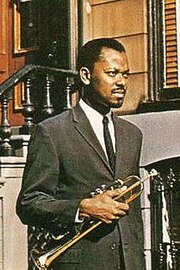Richard Williams's Human Design Chart
1/3 Splenic Projector**Richard Williams: A Jazz Luminary and Projector of Creativity**
Richard Williams, born on May 4, 1931, in Galveston, Texas, was an influential American jazz trumpeter whose artistry left a lasting mark on the jazz landscape. Known for his unique sound and improvisational skills, Williams played alongside jazz greats, including Charles Mingus, with whom he performed at the Newport Jazz Festival in 1959. This collaboration marked the beginning of a fruitful recording relationship that continued throughout the 1960s.
As a Projector in Human Design, Williams embodied the essence of guidance and mastery in his craft. His Splenic Authority allowed him to make intuitive decisions that resonated with his artistic vision, while his strategy of “Waiting for the Invitation” meant that he thrived in collaborative environments where his talents were recognized and appreciated. This was evident in his numerous recordings as a sideman for prominent labels such as Blue Note, Impulse!, New Jazz, Riverside, and Atlantic, where he contributed to the works of iconic musicians like Oliver Nelson, Grant Green, and Duke Ellington.
In 1960, Williams recorded his only session as a leader, “New Horn in Town,” released on Candid Records. This album featured notable musicians like Reggie Workman and Leo Wright and showcased his innovative approach to jazz. His 1/3 Profile in Human Design reflects his journey of experimentation and learning through experience, as he navigated the complexities of the jazz scene.
Williams also made significant contributions to Broadway, performing in pit orchestras for productions such as “The Me Nobody Knows” and “The Wiz,” both of which featured him on the original cast recordings. His versatility extended beyond jazz trumpet; he also played piccolo trumpet and flugelhorn with classical orchestras, demonstrating his wide-ranging musical abilities.
Throughout his career, Williams led bands in renowned New York jazz clubs, including Sweet Basil’s and the Village Vanguard, where he shared his passion for music with audiences. His channels, including 57-10, 7-31, and 13-33, highlight his capacity for deep emotional expression and connection with others through music.
Richard Williams passed away on November 4, 1985, at the age of 54, due to kidney cancer in his home in Jamaica, New York. His legacy as a Projector in the jazz world continues to inspire musicians and fans alike, reminding us of the power of creative collaboration and the importance of waiting for the right opportunities to shine.
Discover More Famous People
Browse and analyze over 55,000 public figures and celebrities.
Ra Uru Hu
5/1 Manifestor
Martha Stewart
4/6 Manifestor
David Lynch
4/6 Generator
Barack Obama
6/2 Projector
Steve Jobs
6/3 Generator
Vladimir Putin
5/1 Manifestor
Kim Kardashian
3/5 Generator
Michael Jackson
1/3 Projector
Marilyn Monroe
6/2 Projector
Ariana Grande
2/4 Projector
Oprah Winfrey
2/4 Generator
Johnny Depp
2/4 ManifestorWhat is HumanDesign.ai and how does it work?
Curious what makes Richard Williams tick? HumanDesign.ai instantly maps their exact birth data into a fully interactive clickable bodygraph chart, letting you hover or tap every center, channel, and gate for plain-language explanations. Bella, the platform’s built-in AI guide, adds context in real time, translating complex mechanics into everyday insights so you can see how Richard Williams’s strengths, challenges, and life themes play out on-screen.
The same tools are waiting for you. Generate your own Human Design Chart in seconds, open a library of 2000+ suggested questions, and chat with Bella as often as you like to decode your design, daily transits, and even relationship dynamics.
Want to compare energies? Save unlimited charts for friends, family, or clients, then ask Bella to reveal compatibilities, composite patterns, or coaching tips, all in one conversation thread.
Start free with core features, or unlock our Personal and Pro plans for deeper dives: unlimited Q&A, celebrity chart search spanning 55,000+ public figures, white-label PDF reports, branded content generation, and a professional profile with built-in booking for practitioners. Whether you’re exploring your own potential or guiding others, HumanDesign.ai delivers an ever-expanding toolbox of AI-powered insights—no spreadsheets, no jargon, just clarity at your fingertips.
Ready to see yours? Signup for FREE today!

